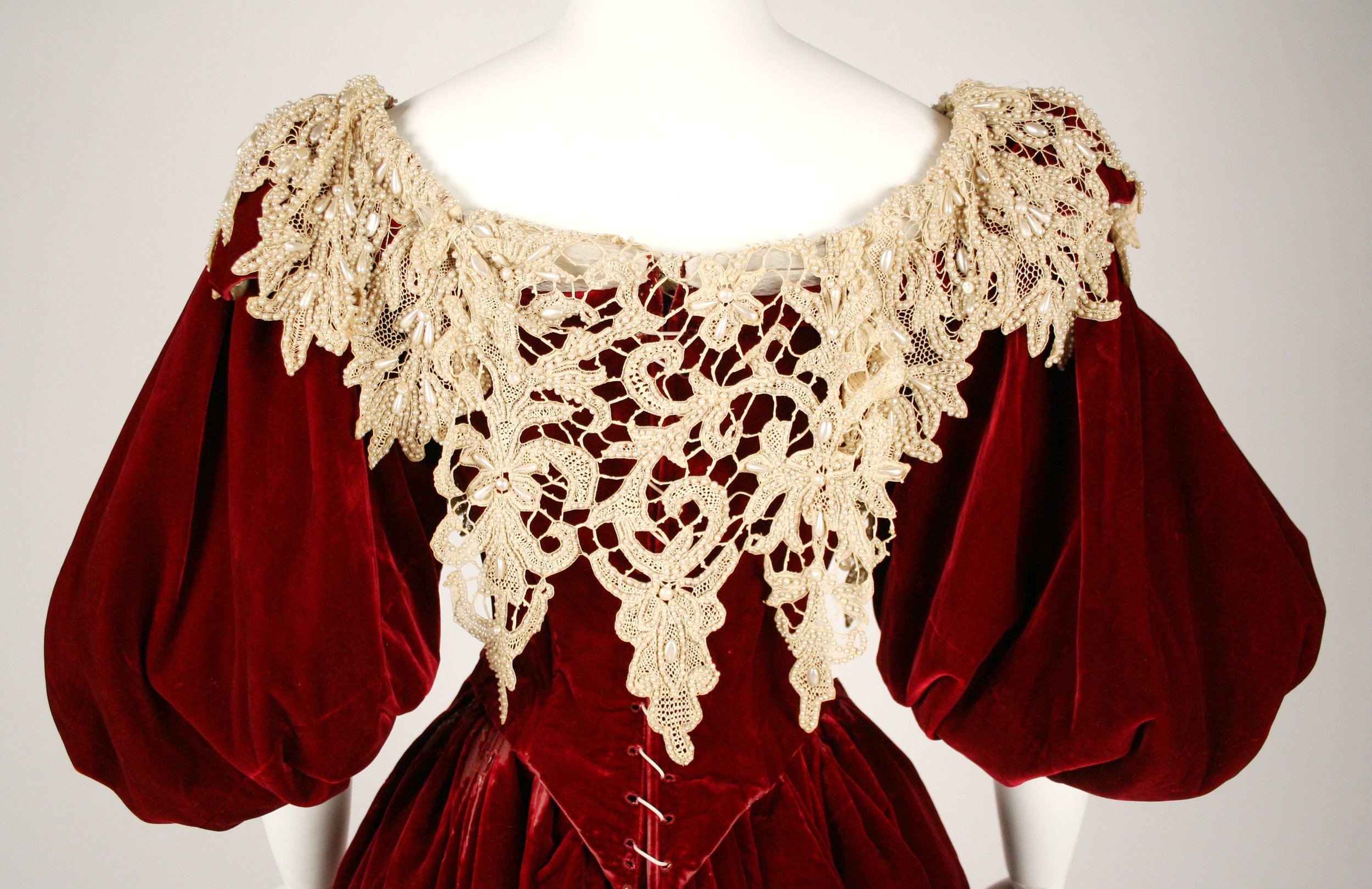
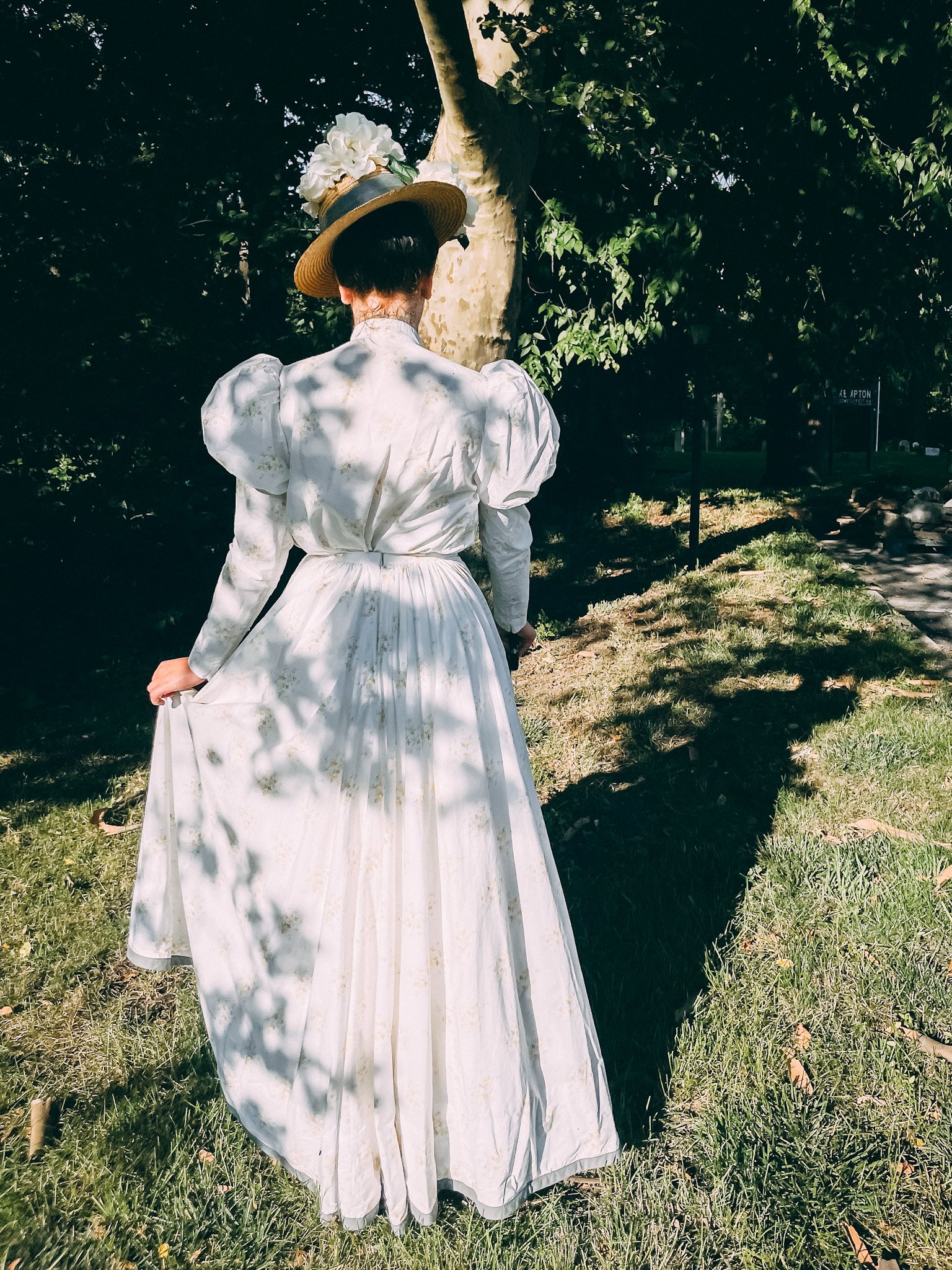
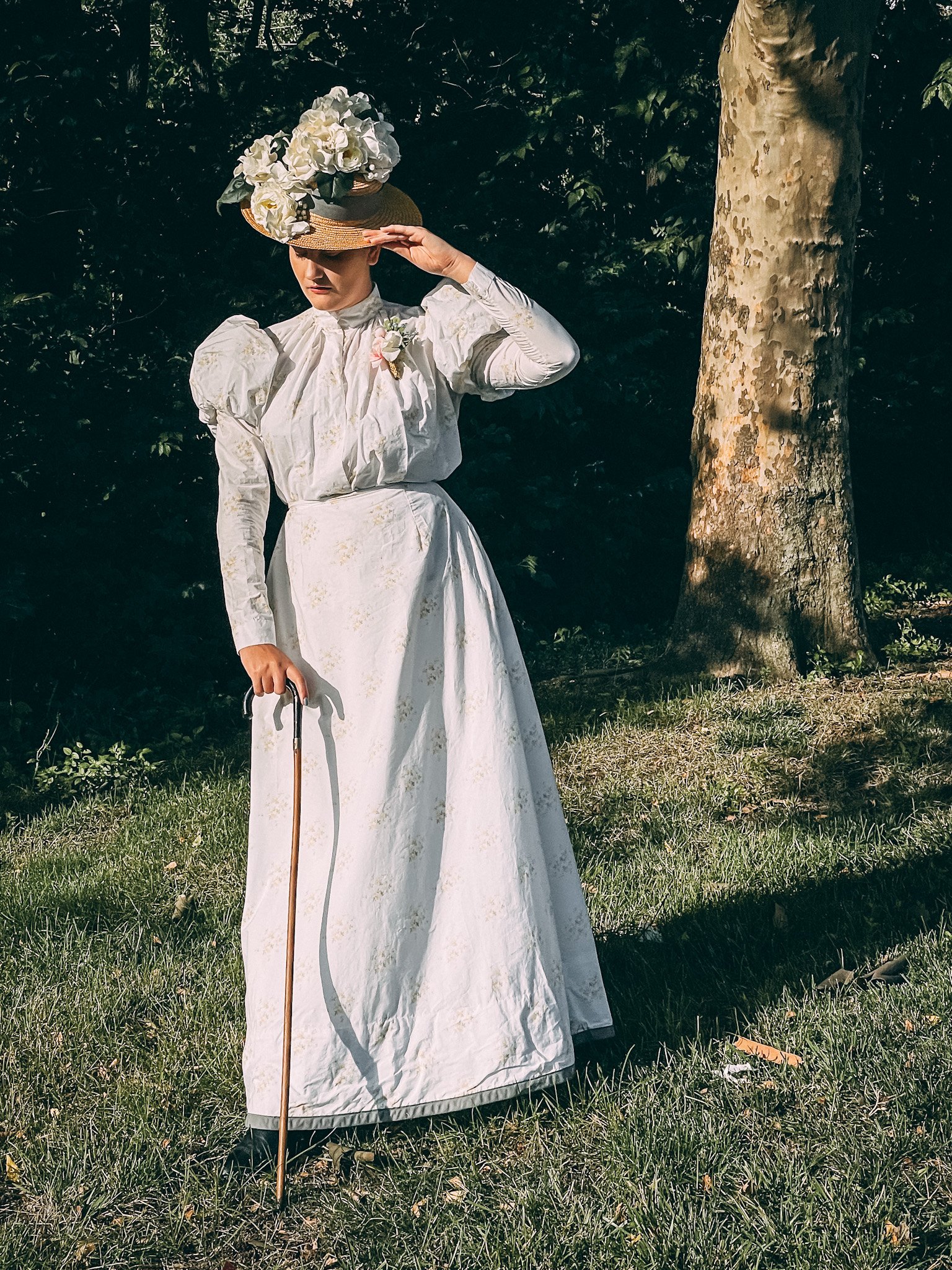
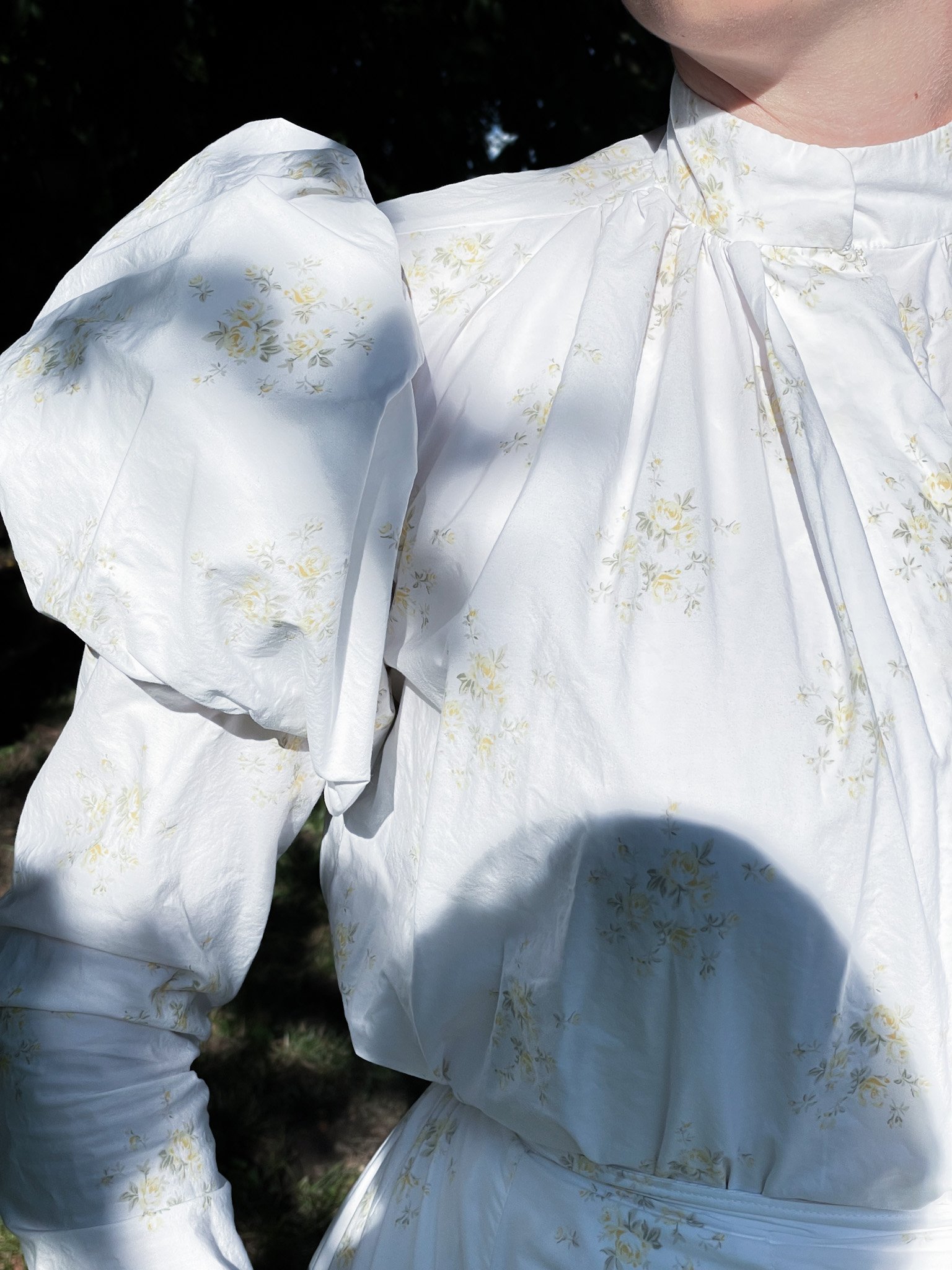
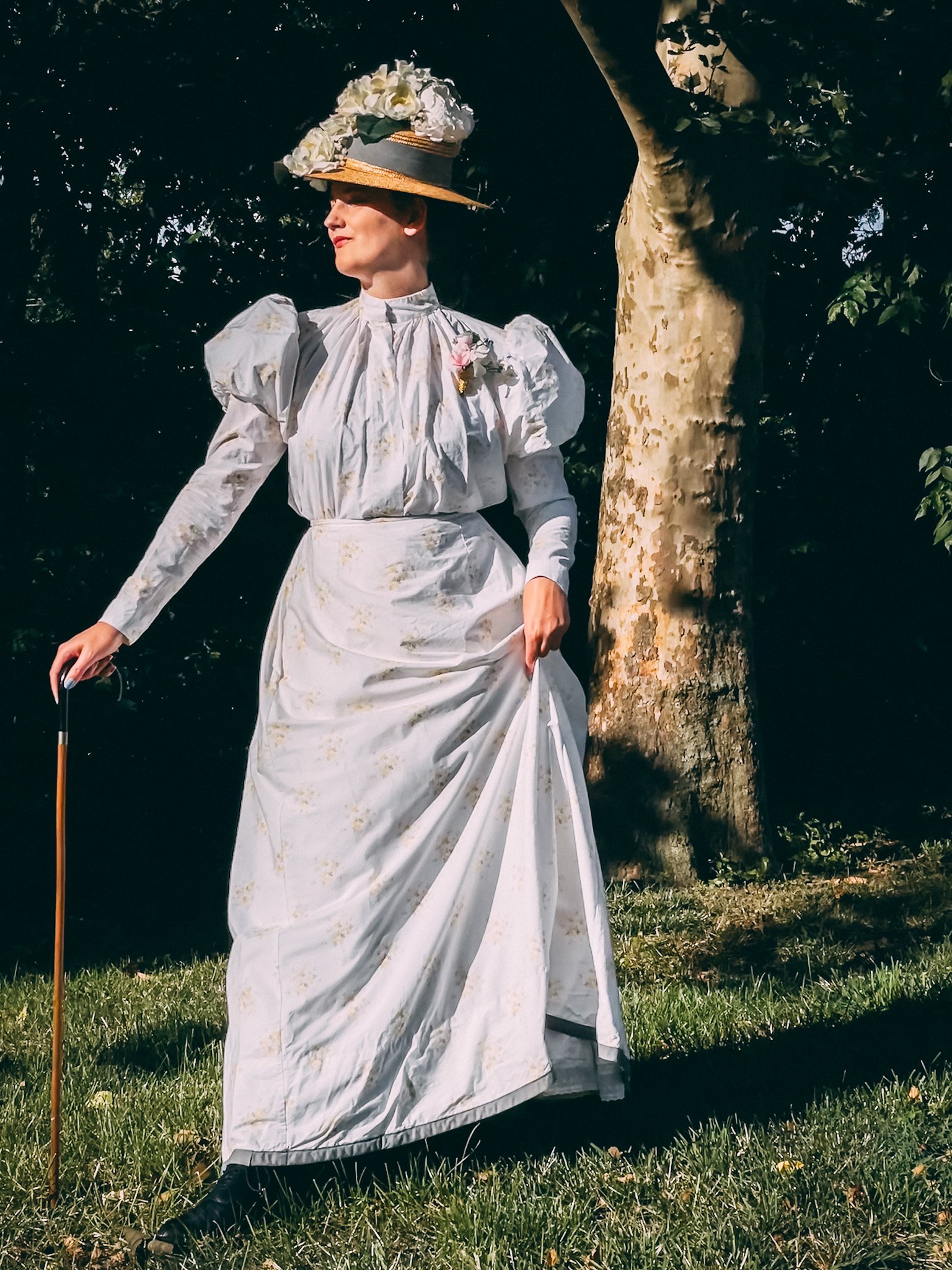
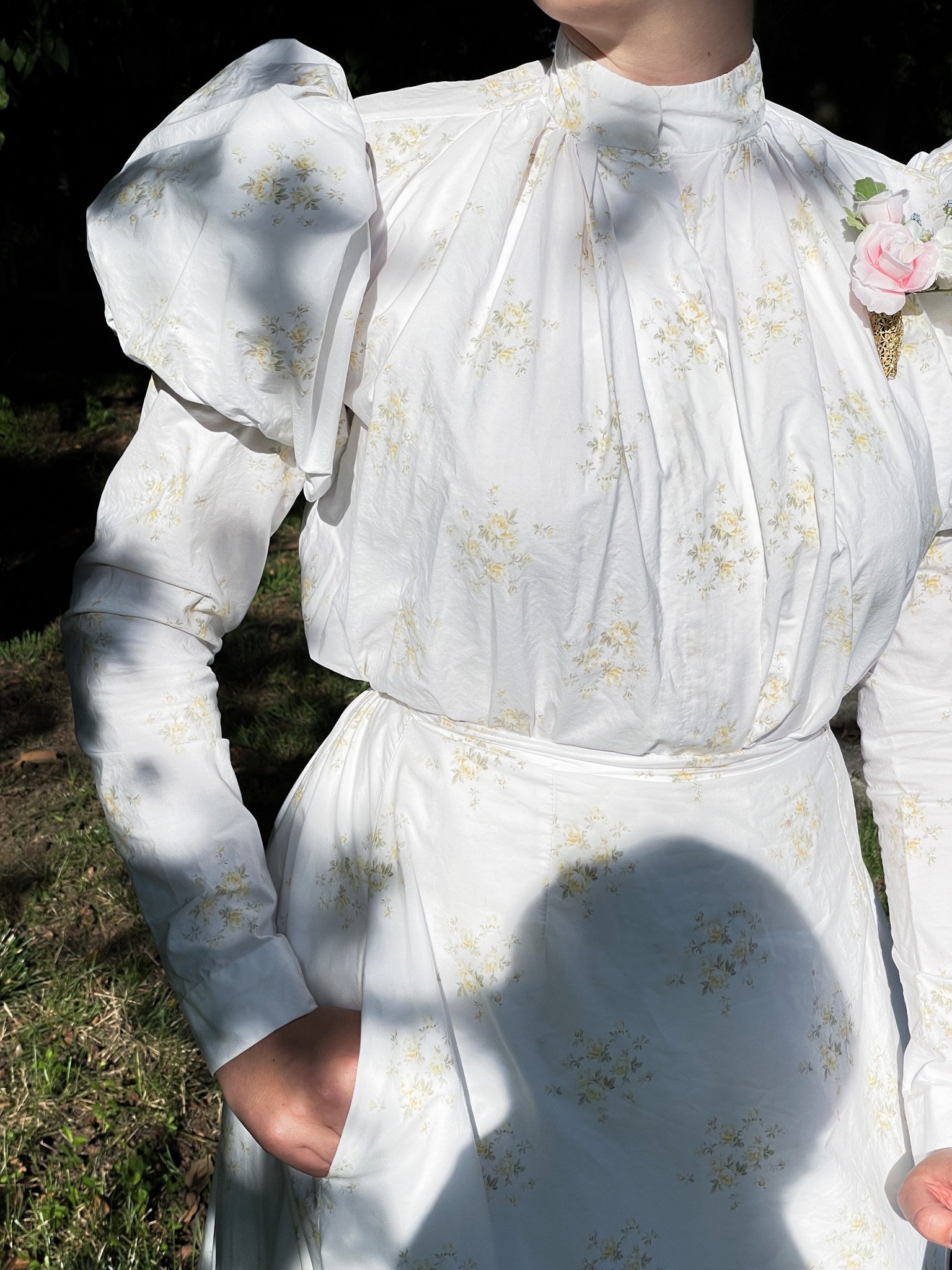
1890s Spring Ensemble
This two-piece spring ensemble consists of a shirtwaist & floor length skirt, and is accessorised with a darling straw boater hat trimmed with fake hydranga flowers. The dress is made from a floral print cotton, with back hook and eye closure and each side of the skirt boasts a generously sized pocket, combining practicality with style, a hallmark of late Victorian attire.
Pattern for the skirt was drafted out of the 1895 book Keystone Jacket & Dress Cutter. This late Victorian tailoring manual was specifically designed for self-instruction, ensuring the utmost precision and accuracy in bringing this splendid ensemble to life.
I drew inspiration from this antique photograph taken in the late 1890s-early 1900s in Athens, Ohio. Glass negative restoration by Robin Clark Photography
This spring hat is made of straw and decorated with faux silk hydrangas in the style of the 1890s. Hats in the 1890s were tall and ornately decoated with silk flowers, feathers, and ribbons.


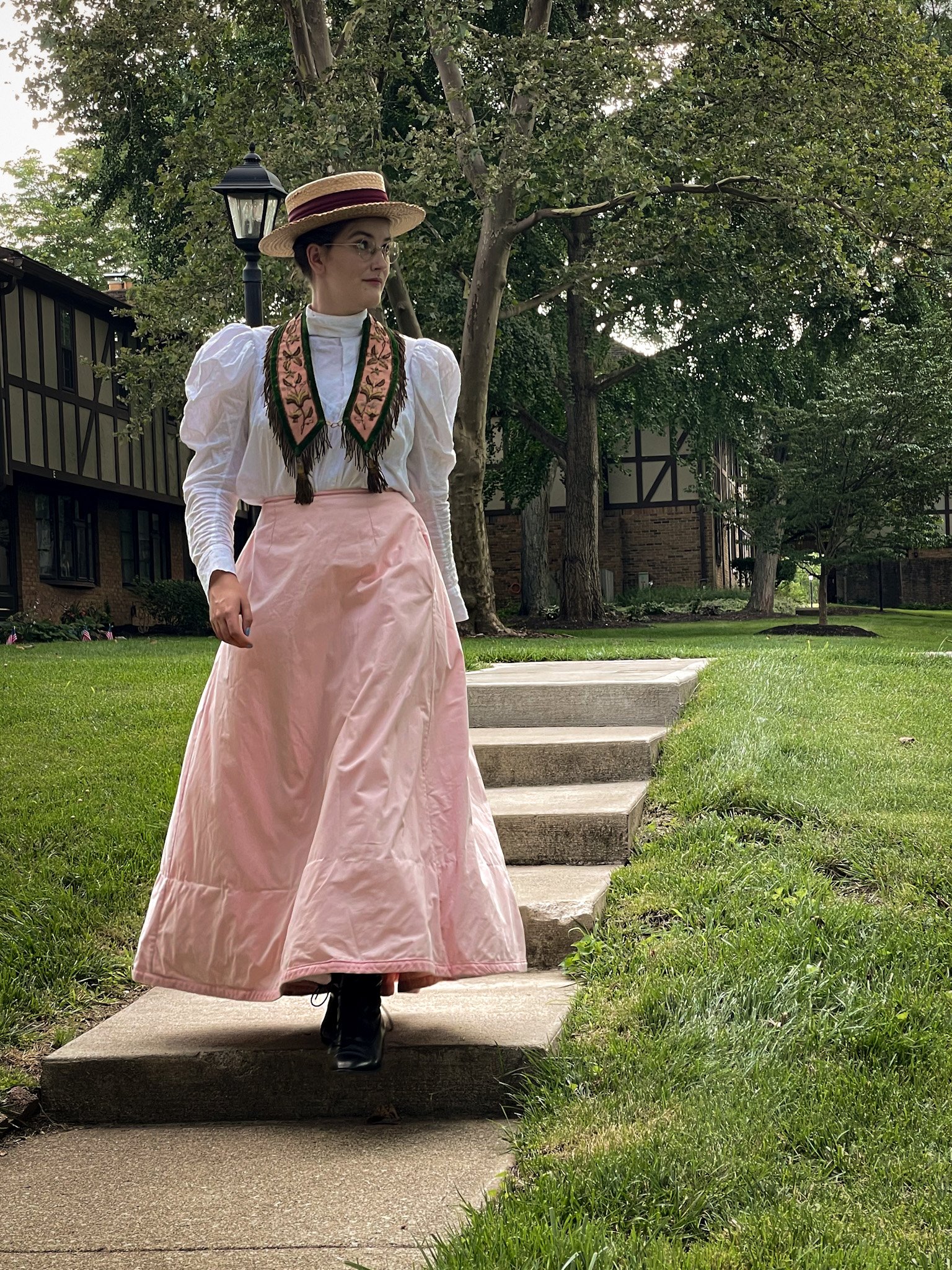
Late Victorian Walking Outfit
The ensemble showcases a charming white Swiss dot shirtwaist paired with a delightful full pink cotton skirt, capturing the essence of the 1890s everyday attire. The skirt features a distinctive detail frequently seen in period photographs: a large hem facing. This addition adds weight to the hem, ensuring better movement and an elegant drape as you walk. In addition, the hem is thoughtfully bound with a bias braid, protecting the skirt fabric from wear and tear. This clever design element allows for the removal of the braid when necessary, preserving the life of the more precious fabric.
Adding a touch of historical authenticity, this outfit is accessorized with an antique Order of Rebekah officer's collar. This symbolic addition reflects the character for whom the outfit was created, emphasizing their affiliation with the order and further enhancing the overall narrative and visual impact.

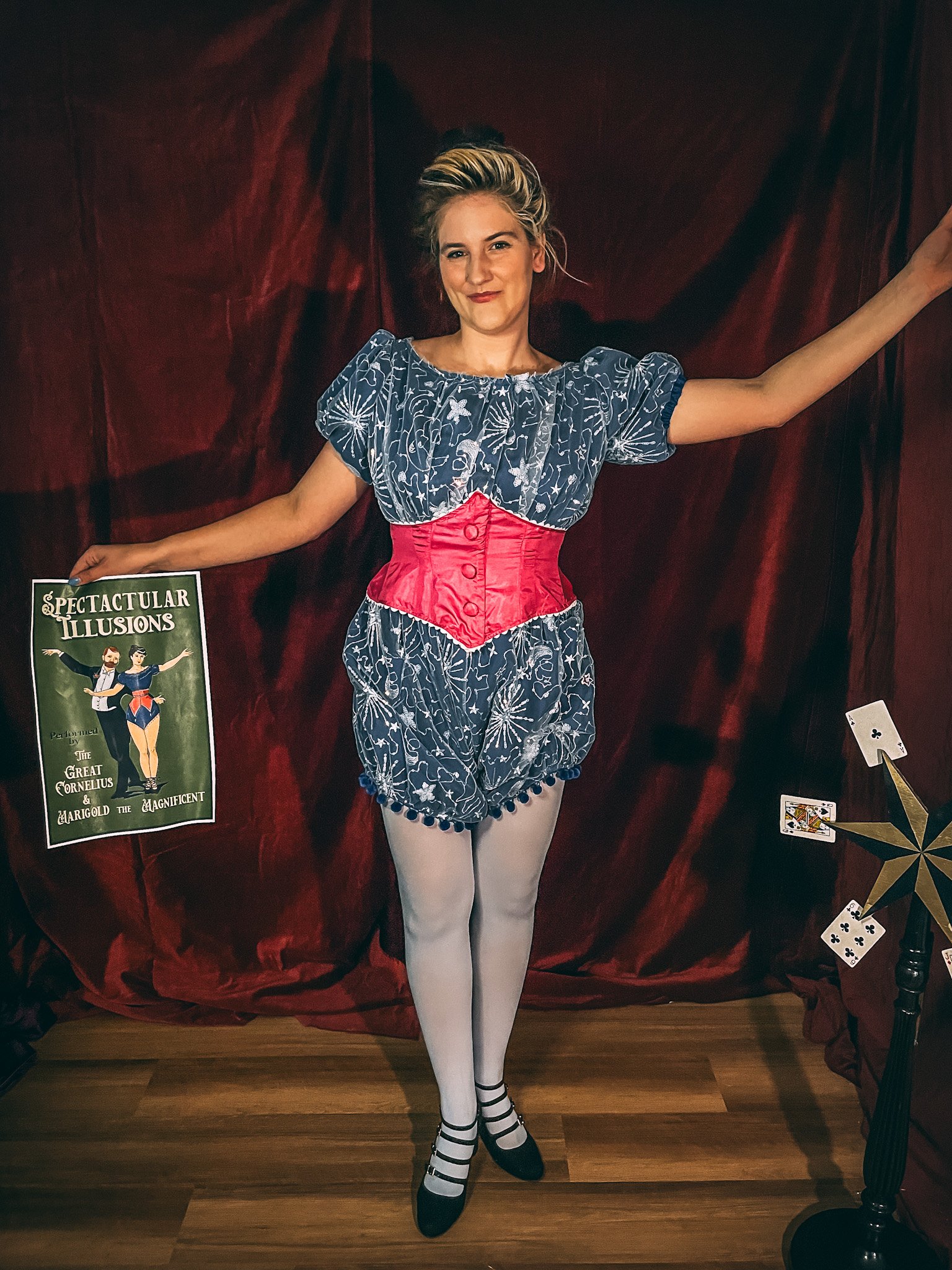
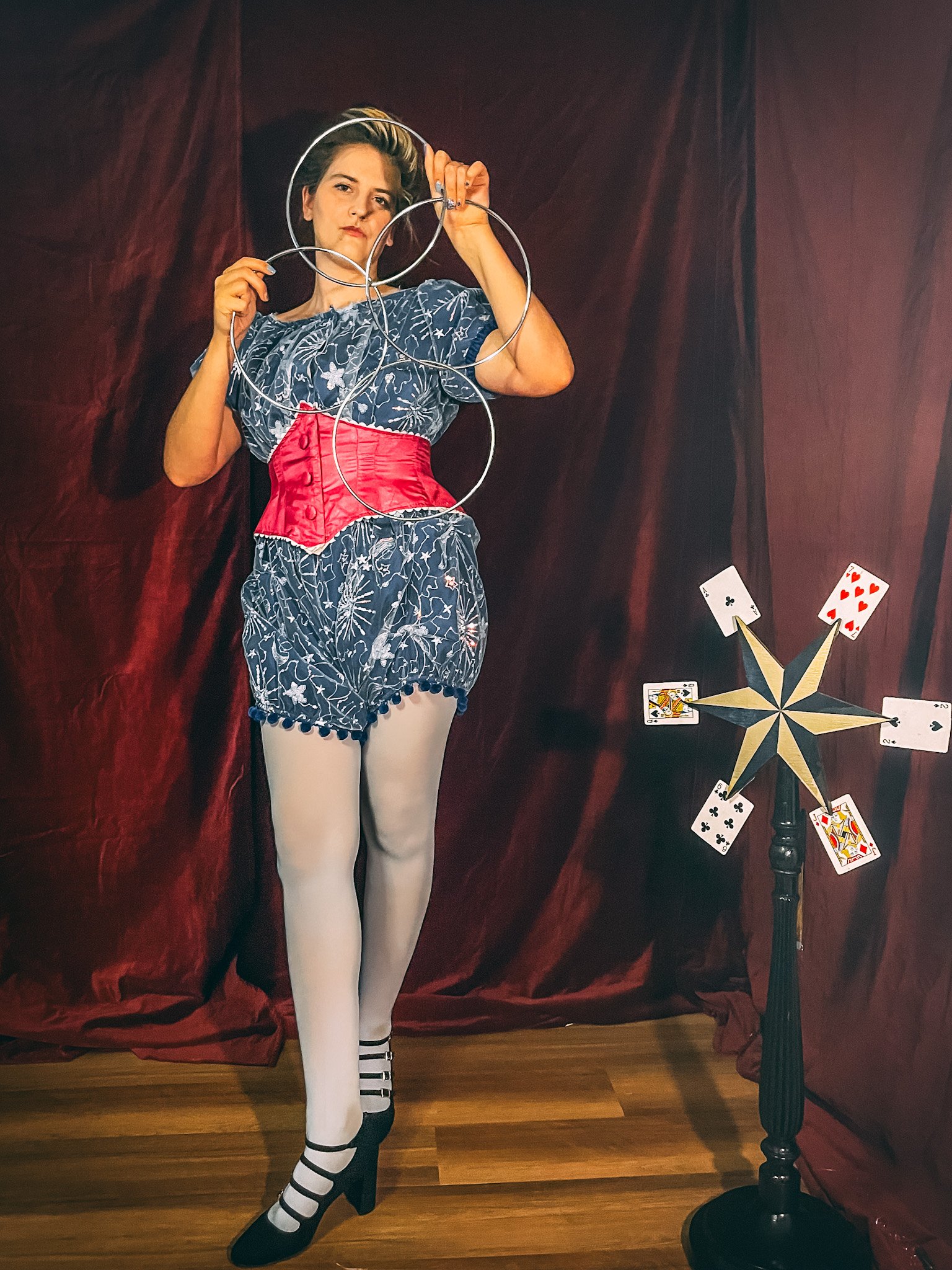
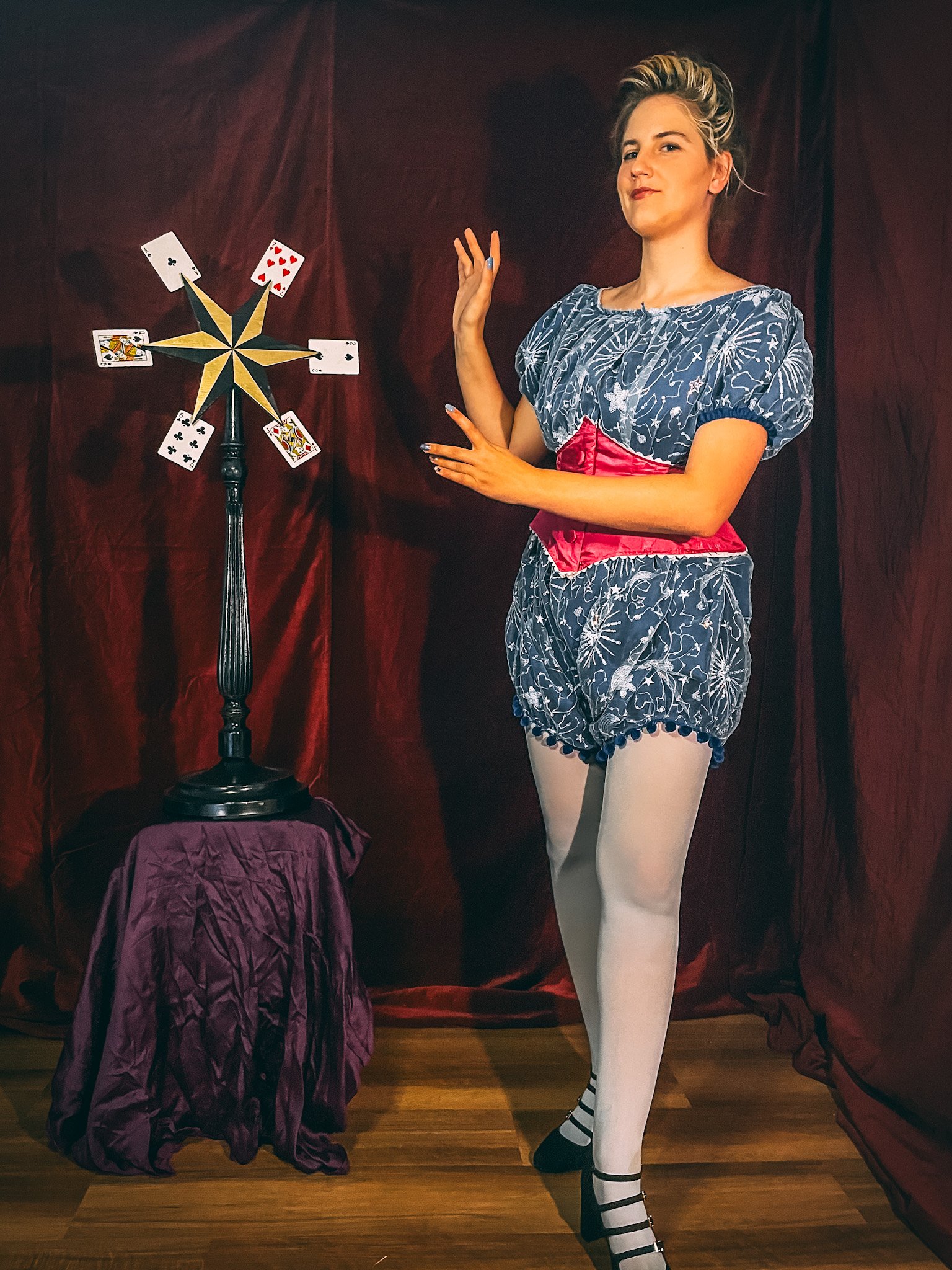
Late Victorian Stage Magician Costume
Designed specifically for a victorian magic show, this costume captures the essence of the vibrant energy of circus performers depicted in posters and cigarette cards of the era. The costume features a blue sequined blouse, matching bloomers, and a bright pink satin corsetlette. The true magic lies within this costume's secret surprise—a transformative quick-change element that will leave the audience spellbound. Blink and you’ll miss it, this costume seamlessly transforms into a breathtaking ballgown before your very eyes!
With its intricate details, vibrant colors, and the awe-inspiring quick-change transformation, this costume is a true testament to the art of illusion and the beauty of theatrical craftsmanship.
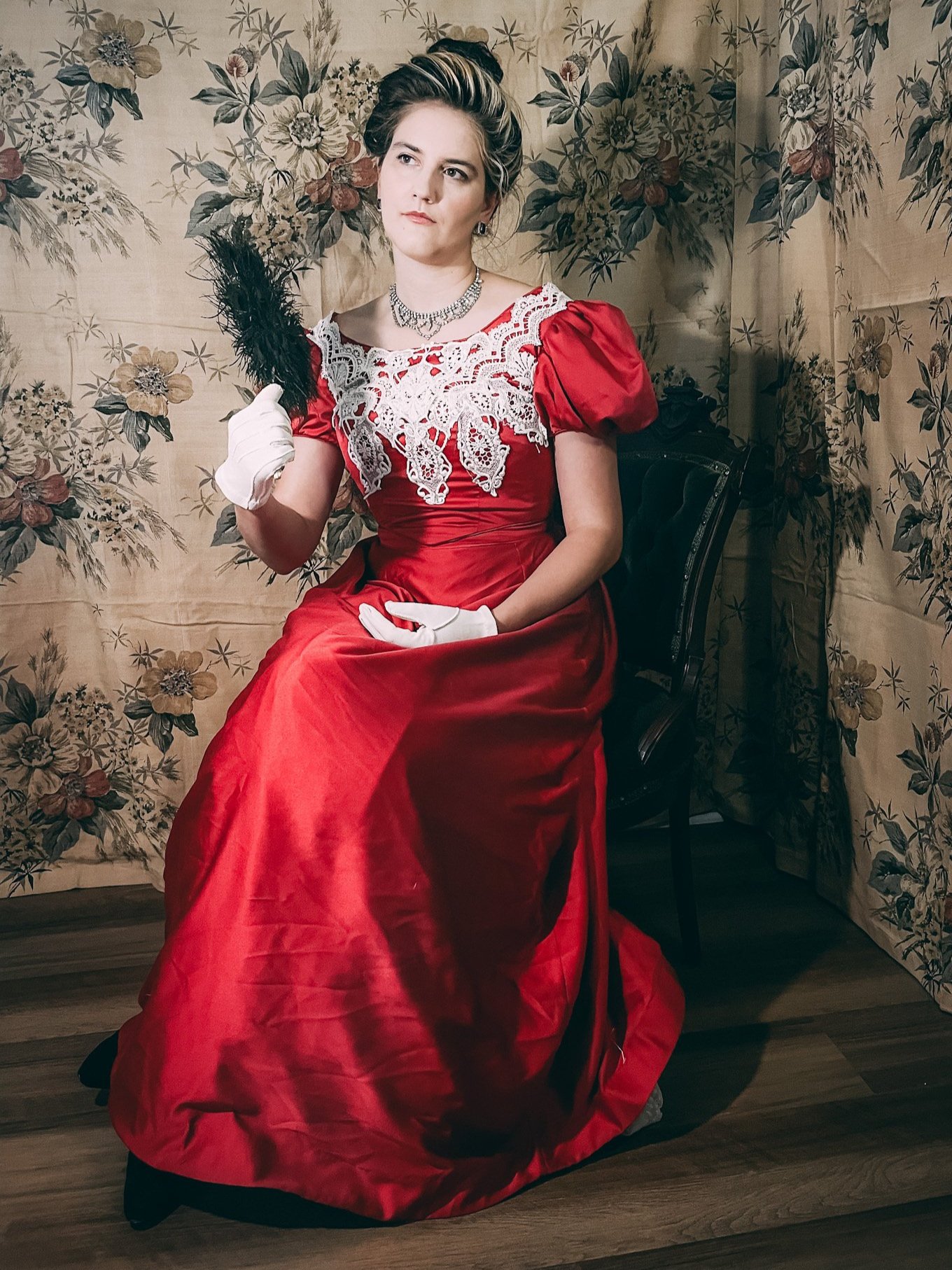
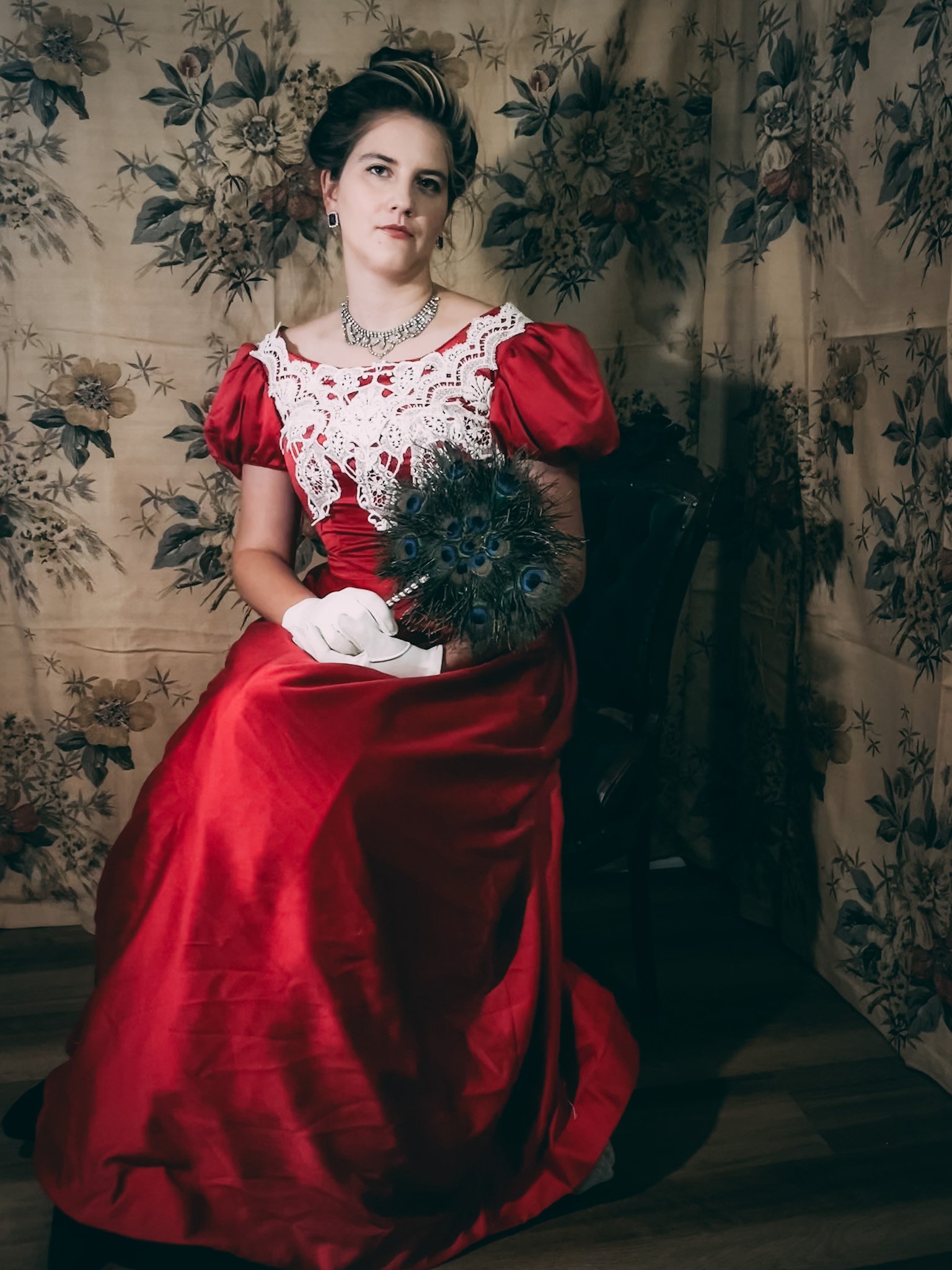

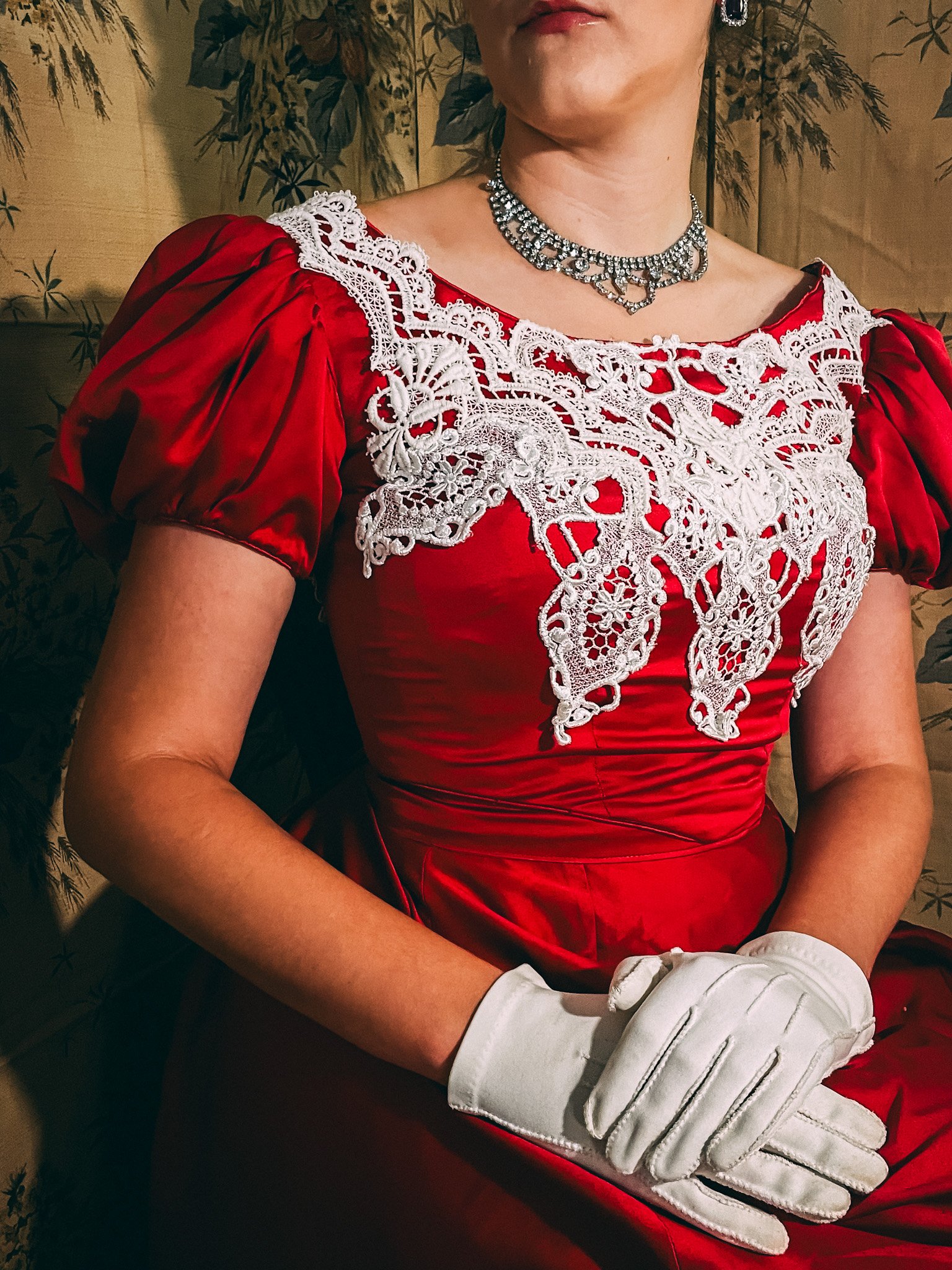
This late Victorian ball gown is a testament to the art of transformation and repurposing. Born from the desire to create beauty from forgotten treasures, this gown began its journey as an old and worn dress tucked away in costume storage, longing for a new lease on life. Inspired by the exquisite craftsmanship of a red velvet gown created by Charles Frederick Worth around 1893-1895, the challenge was set to breathe new elegance into its faded glory.
The bodice of this gown was carefully adorned with individual lace appliques. The lace— repurposed from a pair of curtains— found new purpose in this creation, beautifully mirroring the lace detailing of the original Worth dress. Every element of this transformation was thoughtfully considered, with an emphasis on sustainability and repurposing materials. In fact, everything except the thread used was repurposed.
These short videos show the process of transforming the original dress into a magnificent gown fit for a Vanderbilt.
Late Victorian Costumes
The late Victorian era, particularly the 1890s, holds a special significance for me. I had the privilege of collaborating with Ohio History Connection's Ohio Village, an educational village that immerses visitors in the year 1898. During my time working with this institution, I had the opportunity to curate and create costumes, resulting in a collection that offers a distinctive snapshot of the late 1890s, specifically in a rural setting.
The costumes from this period epitomize an exquisite refinement, capturing the essence of an era defined by its profound appreciation for hourglass silhouettes, intricate embellishments, and a remarkable attention to accessories. Each garment in this collection reflects the fashion trends and sensibilities of the late 1890s, providing a glimpse into the unique style and aesthetics of that era.








